The Future of Tree Care: How Smart Monitoring Networks Could Revolutionize Storm Damage Prevention in Bohemia and Beyond
While storm-battered communities across Long Island continue to face the devastating effects of severe weather on their urban forest, a new generation of technology promises to change how we protect and manage our trees. Smart tree monitoring networks, though still emerging, represent the cutting edge of proactive tree care that could prevent costly storm damage before it occurs.
Understanding Smart Tree Monitoring Technology
Smart tree monitoring uses IoT sensors that quietly gather data in places humans can’t easily reach, creating a digital nervous system for our forests that monitors their health, guards against threats, and even shapes environmental policy. These systems feature IoT solutions with sensors resembling birdhouses installed in trees, sending data to a central system where it is analyzed using AI algorithms.
By employing sensors and IoT devices, foresters can now monitor vast areas with precision, obtaining real-time data on tree health, soil moisture, and environmental conditions. This technology represents a dramatic shift from traditional reactive tree care to preventive maintenance that can identify problems before they become dangerous.
How Smart Networks Prevent Storm Damage
The potential for storm damage prevention lies in the comprehensive monitoring capabilities of these systems. By gathering data on environmental conditions such as temperature, humidity, and air quality from sensors, IoT systems can assess forest health, monitor fire risks, and offer protection against diseases, pests, or illegal activities.
Sensors can monitor plant health indicators such as water flow rate and the relative abundance of important ions, including nitrogen, potassium, and phosphorus. This data helps arborists identify trees that may be structurally compromised or stressed, making them more vulnerable to storm damage.
For communities like Bohemia, where residents regularly face storm-related tree emergencies, this technology could provide early warning systems that alert property owners and tree service professionals when trees show signs of weakness or disease that could lead to failure during high winds.
Real-World Applications and Benefits
Solar-powered devices that attach to tree trunks can detect gas and smoke during early stages of fires, analyzing composition, temperature, humidity, and pressure to identify potential wildfires within an hour. Similar technology could be adapted to detect structural stress in trees before storms arrive.
Self-powered sensors using wind power to gather energy eliminate the need for battery replacements, while energy-aware computation allows sensors to hibernate when readings aren’t needed, providing continuous monitoring without maintenance.
The Local Tree Service Perspective
While advanced monitoring networks are still developing, professional tree service bohemia companies are already implementing proactive approaches to storm damage prevention. Long Island Best Tree Service prioritizes safety and has over 20 years of experience providing high-quality residential and commercial tree services across Long Island, New York City, Brooklyn, and the Bronx.
Their team of technicians receives extensive training to ensure outstanding results, using the highest quality tools and equipment with the knowledge and skill to deliver fast, reliable results. This expertise becomes even more valuable as smart monitoring technology begins to identify at-risk trees that require professional attention.
Current Storm Damage Prevention Methods
Today’s tree care professionals rely on visual inspections and experience to identify potential hazards. Trees that have been professionally maintained are far less likely to come down when weather turns nasty, and having a tree company that knows your property enables quick response when something does happen.
Regular pruning keeps trees healthy and reduces storm damage risk, disease treatment catches problems before they spread to other trees, and proper trimming techniques promote healthy growth instead of creating weak points that fail during high winds.
The Technology Behind Smart Monitoring
IoT devices in forests often communicate using mesh networks – decentralized systems where each sensor acts as a relay for others, creating self-healing and adaptable networks. Low-power wide-area networks using protocols like LoRaWAN can cover several kilometers between nodes, even in dense terrain, with data aggregated and sent via satellite by strategically placing gateways at higher altitudes.
Looking Toward the Future
IoT is transforming forestry from a field based on estimates and slow reactions to one driven by real-time, data-informed decisions, enabling proactive conservation, smarter policies, and more sustainable industry practices.
For Bohemia residents and Long Island communities, the integration of smart monitoring technology with professional tree care services could mean fewer emergency calls, reduced property damage, and safer neighborhoods during storm season. While we wait for these advanced systems to become widely available, working with experienced local tree service professionals remains the best defense against storm-related tree damage.
As technology continues to evolve, the combination of smart monitoring and professional expertise will likely become the new standard in tree care, offering unprecedented protection for our communities and properties against the growing threat of severe weather events.
